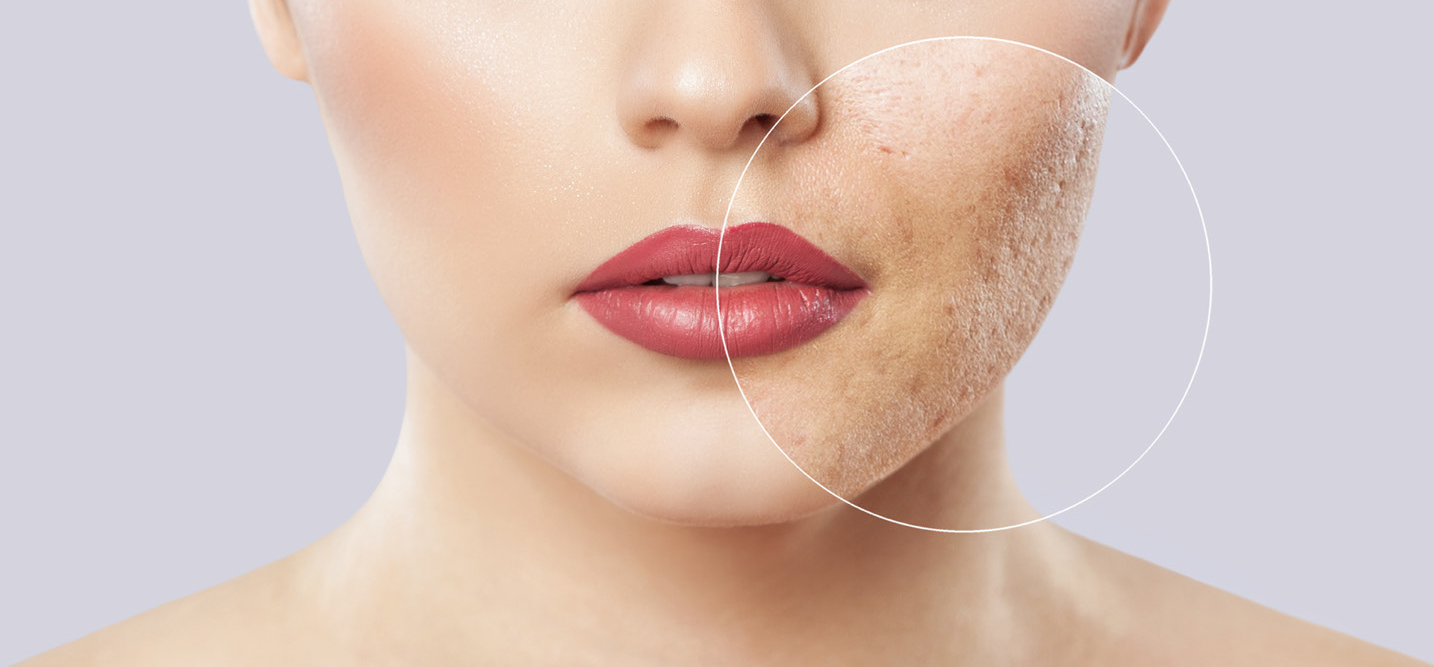

A meta-analysis of the evidence for assisted therapy with platelet-rich plasma for atrophic acne scars
There are a variety of studies available involving the role of platelet-rich plasma (PRP) as an assisted therapy for atrophic acne scars. On closer examination, the results of these studies were varied and there was no current meta-analysis found that looked particularly at atrophic acne scar treatment.
The objective of this study was to complete a meta-analysis assessing improvements in the side effects of PRP, as well as the effect of assisted therapy for atrophic acne scars. To carry this out, the study followed PRISMA guidelines and a full comprehensive search literature was carried out in September 2018 using the electronic databases of PubMed, EMBASE, MEDLINE, and the Cochrane Library. As a result, seven articles were included in this review and all of the studies published used PRP as additive therapy.
The results of the study included treatments such as fractional carbon laser therapy and microneedling. There was a reported four degrees of improvement in five of the studies, which had 249 participants. In four of the studies (with 200 participants), there was a reported mean improvement. A significantly higher amount of improvement was shown in the PRP group compared to the control group. There were fewer side effects, including erythema and edema noted in the PRP groups; however, there was no significance in the findings.
In conclusion, PRP can be a useful assisted therapy for atrophic acne scars.
The role of topical probiotics on skin conditions: a systematic review of animal and human studies and implications for future therapies
Intestinal microbiome has a very important role in moderating systemic inflammation and disease, according to recent research. Probiotics taken orally can modulate the intestinal microbiome, which has also been demonstrated to be effective in treating topical skin conditions, such as acne and rosacea.
Application of probiotics to the skin can help promote a positive bacterial balance to mitigate and to potentially eliminate pathologic conditions.
The aim of this article was to provide a comprehensive review of the studies found that have investigated the role of topical probiotics in mitigating skin conditions. Furthermore, skin conditions where dysbiosis have been found but topical probiotics have not been investigated was also discussed and included. The authors intended this review to look at the evidence of the role that topical probiotics could play in topical skin conditions, as well as highlighting additional areas in need of further research.
Noncollagen dermal fillers: a summary of the clinical trials used for their FDA approval
There are several noncollagen dermal fillers (NCDFs) on the market that have been approved by the US FDA. The aim of this study was to review and compare the clinical trials reviewed by the FDA in the approval of NCDFs.
A total of 21 FDA-approved NCDFs were included in the review. The study also included 24 summary of safety and effectiveness documents.
Following a comprehensive and comparative review of clinical trials of NCDFs by the FDA, results show that there are variable differences in the data reporting, especially for additional product and further treatments. This makes it difficult to compare filler longevity.
The authors believe that a thorough understanding of the trial will allow clinicians to become more aware and allow patient expectations to be better managed in clinical practice.
Platelet-rich plasma treatment for melasma: a pilot study
Treatments for melasma have previously shown that there can be differing results and can also have some associated complications. The aim of this study was to assess the effectiveness of platelet-rich plasma (PRP) treatment for treating melasma. This randomised study used 10 female patients with melasma to conduct a split-face, single-blinded prospective trial. The study saw patients being injected with four treatments of PRP every 2 weeks on one side of their face while normal saline was injected into the other side.
The results were then evaluated using the modified Melasma Area and Severity Index (mMASI), Mexameter® and Antera® 3D. Patient satisfaction was also assessed at baseline at 2, 4 and 6 weeks, and 1 month after treatment completion.
The results of the study showed that there was a significant improvement in melasma using PRP. As this was the first randomised, placebo-controlled trial study using PRP further studies and trials are needed.
Isotretinoin and risk factors for suicide attempt: a population? based comprehensive case series and nested case-control study using 2010–2014 French health insurance data
Although the topic is controversial, there is a link between isotretinoin and suicidal behaviour and/or suicide attempts in patients.
The aim of this study was to look at patients taking isotretinoin who committed or attempted suicide while under treatment and to further assess the risk factors for isotretinoin.
To complete this study, the authors looked at a comprehensive case series of suicides and suicide attempts under isotretinoin, and a case-control study, using a French health insurance database. The review compared cases to controls, looking at age, gender and rank of the current course; controls were to be exposed to isotretinoin at the index date.
The patients' psychiatric history prior to commencing isotretinoin was also looked at. In a second study, patients who had continued their isotretinoin treatment after their SA were also compared to patients who discontinued it.
Between 1 January 2010 and 31 December 2014, a total of 328 018 patients started a course of isotretinoin. It was noted that 184 of these patients were hospitalised for a suicide attempt. Among 176 of suicide attempt cases that were followed up sufficiently; 103 carried on with their treatment after the attempt.
The authors conclude that suicide attempts while taking isotretinoin are rare, and the results suggest that most of the patients concerned have a risk-prone profile noticeable at the commencement of treatment. The risk-benefit ratio of continuing isotretinoin after a suicide attempt needs further consideration.


